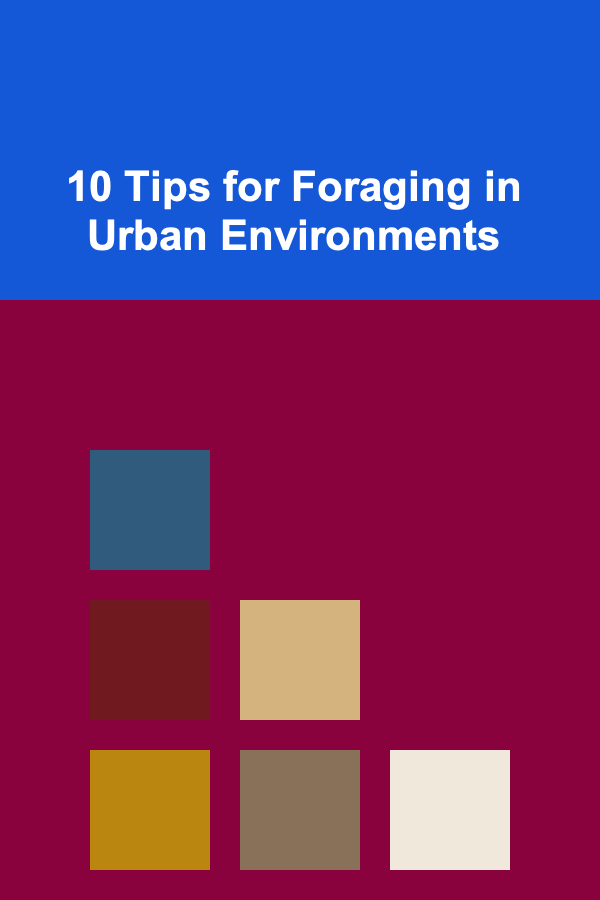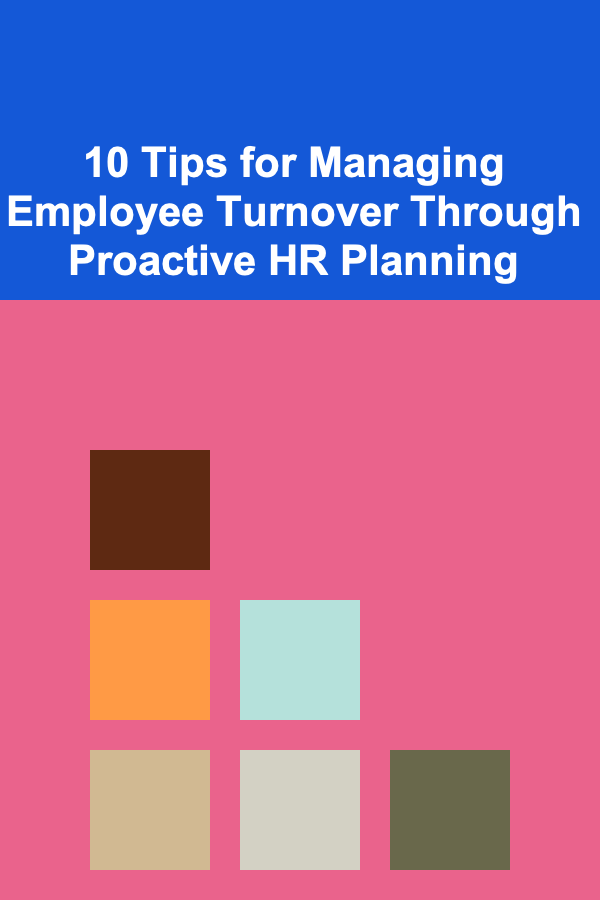
10 Tips for Foraging in Urban Environments
ebook include PDF & Audio bundle (Micro Guide)
$12.99$5.99
Limited Time Offer! Order within the next:

Foraging in urban environments has become increasingly popular, as people seek to reconnect with nature in their busy city lives. Urban foraging is a practice that involves gathering edible plants, fungi, and other resources from public spaces like parks, streets, and even vacant lots. Whether you're looking to enhance your diet with fresh, free food or simply want to enjoy a more sustainable lifestyle, foraging can be a rewarding and educational experience. However, foraging in urban areas presents unique challenges, and it's important to approach it with knowledge and care.
In this article, we will explore 10 essential tips to help you safely and effectively forage in urban environments. By the end, you'll have a deeper understanding of how to find edible plants in the city, how to identify them, and how to forage responsibly.
Know Your Local Laws and Regulations
Before you head out to forage, it's crucial to understand the legal framework surrounding foraging in your city or region. Different places have varying laws regarding what you can and cannot gather. In some cities, foraging may be prohibited on public property, or you may need a permit for certain types of collection, especially in parks or nature reserves.
What to Do:
- Research local laws: Check with local authorities or websites to see what the rules are regarding foraging.
- Respect private property: Never forage on private property without permission. It's not only illegal but also disrespectful to trespass.
- Use city-specific resources: Many cities have online guides or apps that outline what's available for foraging in local parks and public spaces.
Start with Common, Easily Identifiable Plants
When you're first starting out with urban foraging, it's important to focus on plants that are easy to identify and are widely known for being safe and edible. Plants like dandelions, clover, and wild garlic are common in urban environments and are relatively easy to identify, even for beginners.
What to Do:
- Learn to identify a few key species: Start with plants you already know or can easily learn about from local foraging books or apps.
- Join foraging groups: Many cities have foraging groups where you can learn from experienced foragers and share knowledge.
Forage in Safe Areas
In urban areas, safety should be a top priority when foraging. Polluted environments can affect the quality of the plants, and some areas may be treated with harmful chemicals. To minimize risks, it's best to forage in areas that are as clean as possible.
What to Do:
- Avoid roadsides and industrial zones: These areas tend to have higher pollution levels and may not be safe for foraging.
- Choose public parks and community gardens: These spaces are often well-maintained and might have less pollution.
- Look for untouched, wild spaces: Find natural areas that are free from chemical treatments, such as pesticides or herbicides.
Be Aware of Edible and Inedible Look-Alikes
Many edible plants have inedible or even poisonous look-alikes. One of the most important skills in foraging is being able to distinguish between similar plants. Even a small mistake can lead to serious consequences, so it's essential to double-check the plants you pick.
What to Do:
- Study plant characteristics: Pay close attention to the details, such as leaf shape, flower color, and plant height, to ensure you are picking the correct species.
- Use foraging apps and books: Apps like iNaturalist and books like "Edible Wild Plants" can help you confirm your finds.
- Ask for help: If you're unsure, don't hesitate to ask more experienced foragers or consult online communities.
Harvest Responsibly and Sustainably
Foraging is all about sustainability. Over-harvesting can lead to a depletion of local plant populations, which can harm the ecosystem and make it harder for future foragers to find resources. Always harvest in a way that ensures the plant can continue to grow and regenerate.
What to Do:
- Leave some behind: Take no more than 30-40% of any plant population. This allows the plants to continue growing and producing seeds.
- Choose plants that are abundant: Only harvest from plants that are widespread and plentiful, so that their removal won't harm the overall population.
- Avoid rare or protected species: Do not harvest from plants that are endangered or protected by law.
Use Clean Tools and Containers
When you go foraging, it's important to use clean tools and containers to avoid contaminating the plants or fungi you collect. Dirty containers or unclean hands can transfer harmful bacteria, pesticides, or pollutants to the edible parts of the plants you gather.
What to Do:
- Use baskets or cloth bags: These allow plants to breathe and stay fresh.
- Bring a sharp knife or scissors: When harvesting, a sharp tool helps you make clean cuts without damaging the plant.
- Wash your harvest: After gathering your food, wash it thoroughly to remove dirt, pollutants, or chemicals.
Pay Attention to Seasonal Availability
Foraging is highly dependent on the seasons, so it's important to know when certain plants are in season and when they are at their best for harvesting. In urban environments, seasonal availability can vary slightly due to microclimates and local planting schedules.
What to Do:
- Learn about seasonal plants: Familiarize yourself with the growing cycles of common foraged plants in your area.
- Keep track of the seasons: Many foragers keep a journal or digital log of when certain plants are best for harvesting.
Take a Foraging Class or Tour
One of the best ways to learn how to forage in urban environments is to take a class or tour with an experienced forager. Many cities offer foraging tours where you can learn about local plants, fungi, and the basics of sustainable harvesting.
What to Do:
- Sign up for foraging workshops: Look for classes or workshops that teach foraging in your area.
- Take guided tours: These tours provide an opportunity to learn from experts and gain practical experience.
- Join local foraging clubs: Many cities have informal groups where people gather to share knowledge and explore new foraging sites together.
Practice Ethical Foraging
Ethical foraging goes beyond just following the law. It's about respecting nature and the environment while ensuring that your actions are beneficial rather than harmful. This includes respecting the land, the people who live in the area, and the broader ecological system.
What to Do:
- Avoid disturbing wildlife: Do not damage the natural habitat or disturb wildlife when foraging.
- Respect other people: If you are foraging in a public space, be considerate of other people who might be using the area for recreation or relaxation.
- Leave no trace: After foraging, leave the area as you found it, with no litter or disruption to the ecosystem.
Know When to Stop
Finally, it's important to know when to stop foraging. If you're uncertain about a plant, it's best to leave it alone rather than risk consuming something harmful. Additionally, knowing when to stop ensures you are not over-harvesting from any one area.
What to Do:
- Trust your instincts: If you're unsure about a plant's identity, leave it and find something else.
- Forage in moderation: Always be mindful of how much you're taking and how many plants are left in the area.
- Learn about sustainability: Ensure that you are practicing sustainable foraging by continually educating yourself about local ecosystems.
Conclusion
Urban foraging is a rewarding and sustainable way to connect with nature and enhance your diet. However, it requires careful attention to safety, sustainability, and local laws. By following these 10 tips, you'll be well on your way to becoming a responsible and informed urban forager. Whether you're gathering dandelions for a salad or wild garlic for a homemade pesto, remember to always respect the environment and the plants you harvest.
With the right knowledge, tools, and attitude, urban foraging can become a fun, educational, and beneficial hobby that deepens your connection to the world around you. Happy foraging!
Reading More From Our Other Websites
- [Star Gazing Tip 101] Celestial Horizons: Using Drones to Capture Night-Sky Timelapses
- [Organization Tip 101] How to Plan a Charity Gala That Attracts Donors
- [Home Staging 101] How to Stage Your Home for Winter to Create a Cozy Environment
- [Home Maintenance 101] How to Keep Your Home's Air Quality Healthy with Regular Maintenance
- [Organization Tip 101] How to Organize Your Social Media Accounts Effectively
- [Personal Care Tips 101] How to Choose the Best Brow Gel for Your Eyebrow Shape
- [Home Storage Solution 101] How to Store Shoes and Accessories Without Creating Clutter
- [Personal Financial Planning 101] How to Reduce Debt Effectively and Build Credit
- [Home Rental Property 101] How to Set Up an Efficient Property Management System
- [Personal Care Tips 101] How to Use Body Lotion as a Part of Your Anti-Aging Routine

How to Make Your Home More Accessible with Renovation Ideas
Read More
How to Set Up a Personal Library at Home
Read More
Ask a Feng Shui Expert: Your Questions Answered
Read More
How to Prepare a Tax Checklist for Investors (Stocks & Bonds)
Read More
10 Tips for Mastering Illustrator's Pathfinder Tool
Read More
10 Tips for Managing Employee Turnover Through Proactive HR Planning
Read MoreOther Products

How to Make Your Home More Accessible with Renovation Ideas
Read More
How to Set Up a Personal Library at Home
Read More
Ask a Feng Shui Expert: Your Questions Answered
Read More
How to Prepare a Tax Checklist for Investors (Stocks & Bonds)
Read More
10 Tips for Mastering Illustrator's Pathfinder Tool
Read More